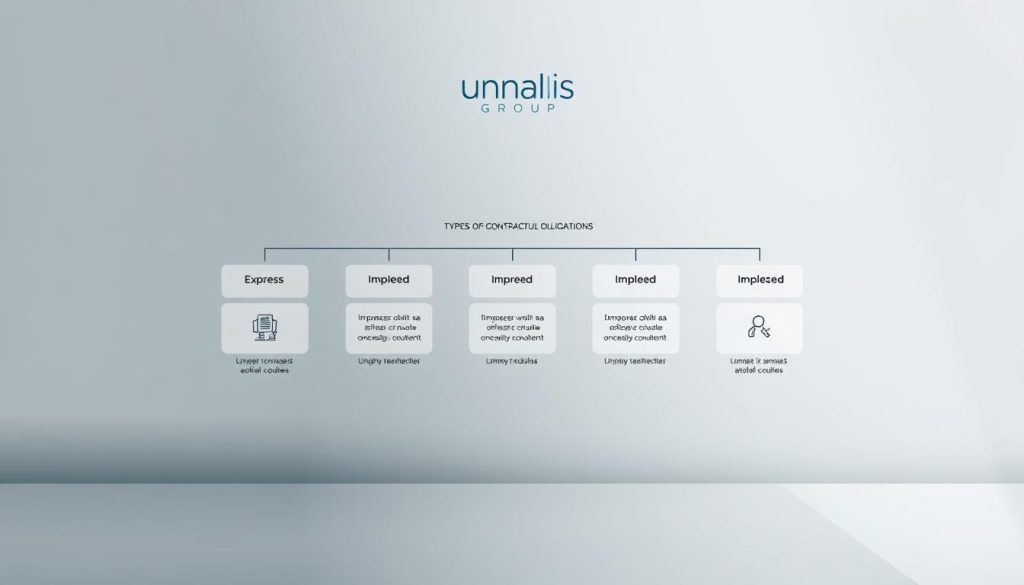Remember the first time you signed a client contract? That mix of excitement and unease—the thrill of landing new work, paired with the quiet worry about what you might have missed. As independent professionals, we often juggle passion projects with paperwork, creative freedom with compliance. But here’s the truth: those invisible threads tying your work to the rules aren’t shackles. They’re guardrails.
Every agreement you sign, every industry standard you follow, builds trust. It’s not just about avoiding trouble—it’s about creating lasting partnerships. Think of that freelancer who ghosted a client last year, or the consultant who faced disputes over deliverables. Clear expectations prevent those stories from becoming yours.
The system isn’t designed to trap you. Contracts clarify boundaries. Industry standards level the playing field. When challenges arise (and they will), knowing your position turns chaos into solvable puzzles. This isn’t about memorizing statutes—it’s about protecting what you’ve built.
Table of Contents
Key Takeaways
- Clear agreements protect both you and your clients
- Industry standards exist to ensure fair practices
- Documentation creates accountability for all parties
- Proactive planning reduces conflict risks
- Knowledge transforms compliance into strategic advantage
Introduction: Setting the Stage for Independent Professionals
Navigating today’s business landscape demands more than expertise—it requires structure. Independent professionals face unique challenges, balancing creative freedom with accountability. Unlike traditional employees, you hold direct responsibility for every aspect of your work relationships.
Why a Framework Matters
Think of your professional practice as a house. Without beams and joists, even the most beautiful design collapses. A clear framework—whether through contracts, industry standards, or regulatory compliance—creates stability. It transforms vague expectations into actionable guidelines, protecting both you and your clients.
Core Elements of Professional Accountability
Your role extends beyond delivering results. Key responsibilities include:
- Meeting regulatory requirements specific to your industry
- Managing financial reporting and tax duties
- Upholding ethical standards that build client trust
One seasoned consultant puts it bluntly: “Your reputation lives in the details.” Proactive planning around these elements prevents misunderstandings and positions you as a reliable partner. When challenges arise—as they inevitably do—your preparation becomes your strongest defense.
Understanding Legal Obligations

Clear rules shape every successful partnership. For independent professionals, knowing where responsibilities begin and end separates thriving collaborations from costly misunderstandings.
What Binds Your Business Relationships
Modern commitments extend beyond handshake deals. A binding duty emerges when three elements align:
- Mutual agreement on specific terms
- Exchange of value (services, payments)
- Intent to create enforceable expectations
Tax consultant Marie L. explains: « Your service contract isn’t paperwork—it’s your playbook for resolving disputes before they start. »
Agreements vs. Laws: Who Sets the Rules?
Your responsibilities flow from two primary sources:
| Source | Example | Enforcement |
|---|---|---|
| Contracts | Project deadlines in client agreements | Civil courts |
| Statutes | IRS self-employment tax rules | Government agencies |
| Industry Standards | Confidentiality in consulting work | Professional associations |
While negotiated terms govern specific projects, statutory duties apply automatically. A 2023 survey revealed 68% of freelancers faced penalties from unclear tax obligations—not contract breaches.
Historical and Theoretical Perspectives on Legal Obligations
Long before digital contracts, Roman lawmakers carved rules into stone tablets. Their work established principles that still shape professional relationships today. The Latin root ligare—meaning « to bind »—lives in our modern understanding of commitments.
Evolution from Roman Law to Modern Practices
Roman society initially managed disputes through family ties and property rights. As commerce grew, so did the need for clear compensation systems. Emperor Justinian’s code defined obligations as “a legal bond requiring action under state law”, creating four categories still relevant today:
- Contractual agreements
- Injury compensation (torts)
- Quasi-contractual fairness
- Accidental harm resolutions
This framework became the blueprint for contemporary obligation law. Modern courts still reference these distinctions when interpreting business disputes.
Philosophical Approaches to Duty and Responsibility
Why do rules bind us? Legal Positivism argues laws create duties regardless of personal views. Natural Law theorists insist valid obligations align with moral truth. Social Contract thinking explains why professionals accept rules: structured systems enable trust and growth.
One ancient principle remains vital: obligations exist to serve human dignity, not control it. As independent workers, understanding this history transforms compliance from burden to strategic tool.
Contractual Obligations: Duties and Performance in Agreements

Ever wondered why some professional partnerships thrive while others collapse? The answer often lies in how clearly both parties define their commitments. Your contractual obligations act as a roadmap, ensuring everyone knows their role and responsibilities.
What Constitutes a Contractual Duty
A binding duty in any agreement consists of three pillars:
- Specific deliverables (project scope)
- Defined timelines and quality standards
- Mutual exchange of value
| Obligation Type | Key Components | Importance |
|---|---|---|
| Delivery | Scope, deadlines, quality metrics | Prevents scope creep |
| Payment | Amounts, schedules, penalties | Ensures cash flow |
| Performance | Quality benchmarks, communication protocols | Builds trust |
Performance, Breach, and Legal Remedies
Fulfilling your contract terms completely discharges your duties. But when issues arise, understanding breach types helps protect your interests:
- Material breach: Fundamental failure (e.g., missed deadline)
- Minor breach: Partial non-compliance (e.g., typo-filled report)
Consultant Mark T. advises: « Always document performance milestones—it’s your shield if disputes arise. » For serious breaches, you can pursue:
- Compensatory damages
- Contract termination
- Alternative dispute resolution options
Smart professionals treat contracts as living documents. Review performance standards quarterly and update terms as business needs evolve. This proactive approach turns potential conflicts into opportunities for alignment.
Classifications of Legal Duties: From Express to Implicit

Professional commitments exist on a spectrum—some spelled out in bold text, others woven into the fabric of your work relationships. Recognizing these distinctions helps you navigate agreements with precision and foresight.
Express, Implied, Joint, and Several Obligations
Express duties form your agreement’s backbone. These written terms—like payment schedules or project milestones—leave minimal room for debate. A graphic designer’s contract might specify « 10 logo concepts delivered by March 15, » creating concrete expectations.
Implied obligations operate differently. They emerge from industry norms or ongoing partnerships. When a software developer automatically includes post-launch bug fixes, they’re honoring unspoken professional standards.
| Type | Key Feature | Enforcement Basis |
|---|---|---|
| Joint | Shared by multiple parties | Collective responsibility |
| Several | Individual accountability | Separate liability |
Freelance teams often encounter joint duties. If three copywriters collaborate on a campaign, the client can hold all accountable for missed deadlines. Several obligations apply when each party manages distinct tasks independently.
Conditional and Solidary Duties Explored
Conditional commitments activate when specific triggers occur. A consultant might receive final payment only after client approval—a common « if-then » arrangement. These terms protect both sides by linking actions to outcomes.
Solidary systems, prevalent in civil law countries, allow pursuing full performance from any party. As legal advisor Claire R. notes: « One partner’s oversight doesn’t limit a client’s recourse—it reshapes risk management strategies. »
Understanding these classifications helps you:
- Draft clearer service agreements
- Anticipate hidden responsibilities
- Choose collaborative structures wisely
Navigating Regulatory, Financial, and Societal Obligations
The modern independent worker juggles more than just client projects. Three interconnected spheres now define professional success: regulatory compliance, financial accuracy, and societal impact. Getting this balance right separates thriving practices from those facing avoidable setbacks.
Compliance with U.S. Legal and Financial Standards
Recent updates to frameworks like Dodd-Frank and IRS reporting rules demand vigilance. A 2023 survey showed 42% of freelancers faced penalties for incomplete tax filings—not poor work quality. Your payment systems must track invoices while automatically reserving taxes. Industry-specific licenses (like FINRA for financial advisors) often carry annual renewal requirements.
Think beyond basic bookkeeping. Healthcare contractors navigate HIPAA documentation, while tech professionals address data privacy laws. One cybersecurity consultant notes: « My clients’ trust hinges on how I handle their sensitive information—not just my technical skills. »
Balancing Societal and Business Responsibilities
Ethical expectations now shape client choices. Over 60% of businesses prefer partners demonstrating environmental or social responsibility. This might mean:
- Using eco-friendly vendors
- Auditing supply chains
- Adopting inclusive hiring practices
These actions build credibility without formal mandates. A graphic designer increased referrals by 30% after adding sustainability clauses to service agreements. Regular training helps maintain compliance while spotting emerging trends.
Smart professionals treat regulations as growth tools. Updated systems prevent fines while showcasing reliability. When clients see your commitment to standards, they see a partner worth keeping.
FAQ
Why do contracts matter for independent professionals?
Contracts define enforceable expectations between parties. They clarify payment terms, deliverables, and consequences for non-performance. Without written agreements, disputes over verbal promises become harder to resolve under U.S. law.
What happens if I breach a client agreement?
Failure to fulfill contractual duties can lead to lawsuits, financial penalties, or demands for specific performance. Courts may require compensation for losses caused by delayed projects or undelivered services. Early communication often mitigates risks.
Are there non-contractual responsibilities I should know about?
Yes. Tax compliance, business licensing, and adherence to industry regulations (like HIPAA for healthcare) apply regardless of contracts. Platforms like QuickBooks or LegalZoom help track these requirements.
How do implied obligations affect my work?
Even without explicit terms, courts may enforce standards like « good faith » efforts or timely communication. For example, freelancers using Upwork must follow platform rules beyond individual client agreements.
What’s the difference between joint and several liability?
Joint liability means shared responsibility among parties (e.g., co-freelancers). Several liability holds each party fully accountable. Contracts should specify which applies—common in partnerships using tools like DocuSign for clarity.
How have historical concepts shaped modern duties?
Roman law’s « quasi-contract » principles still influence restitution claims. Today, platforms like PayPal resolve disputes using similar fairness standards, requiring proof of unjust enrichment or unmet promises.
What IRS standards apply to independent workers?
Schedule SE for self-employment tax, quarterly estimated payments, and 1099-NEC reporting are mandatory. Software like TurboTax Self-Employed guides compliance, avoiding penalties from missed deadlines.





